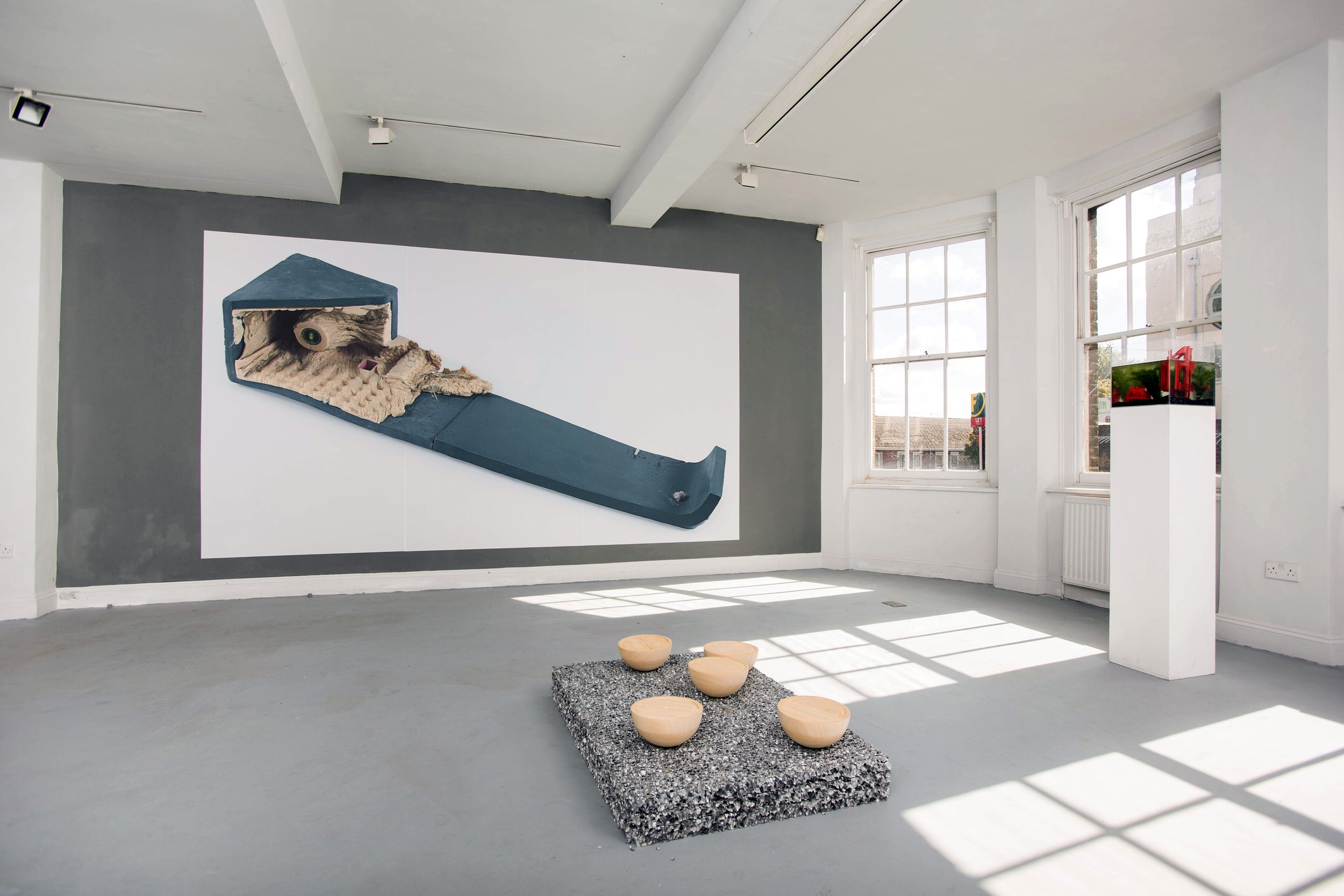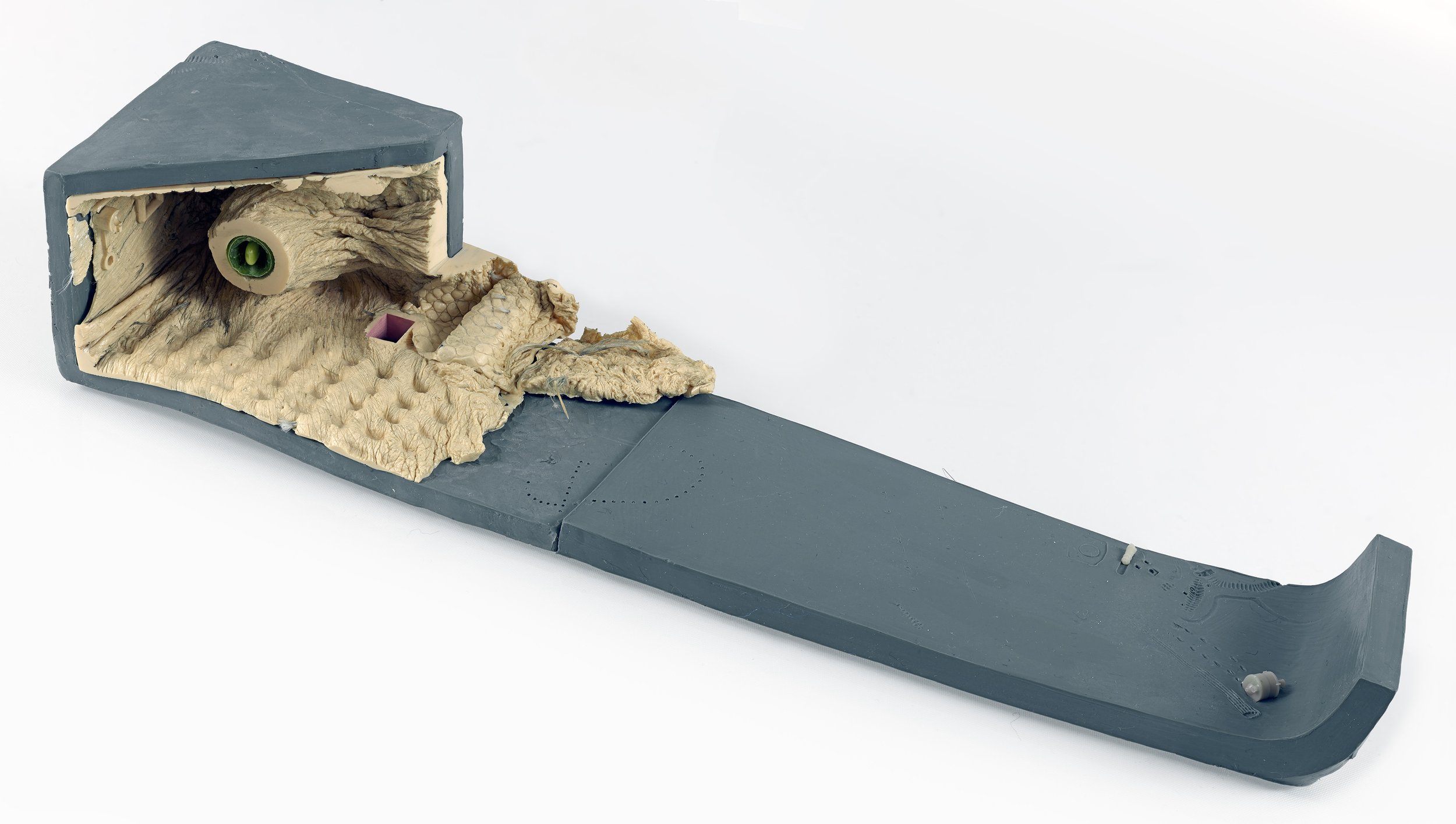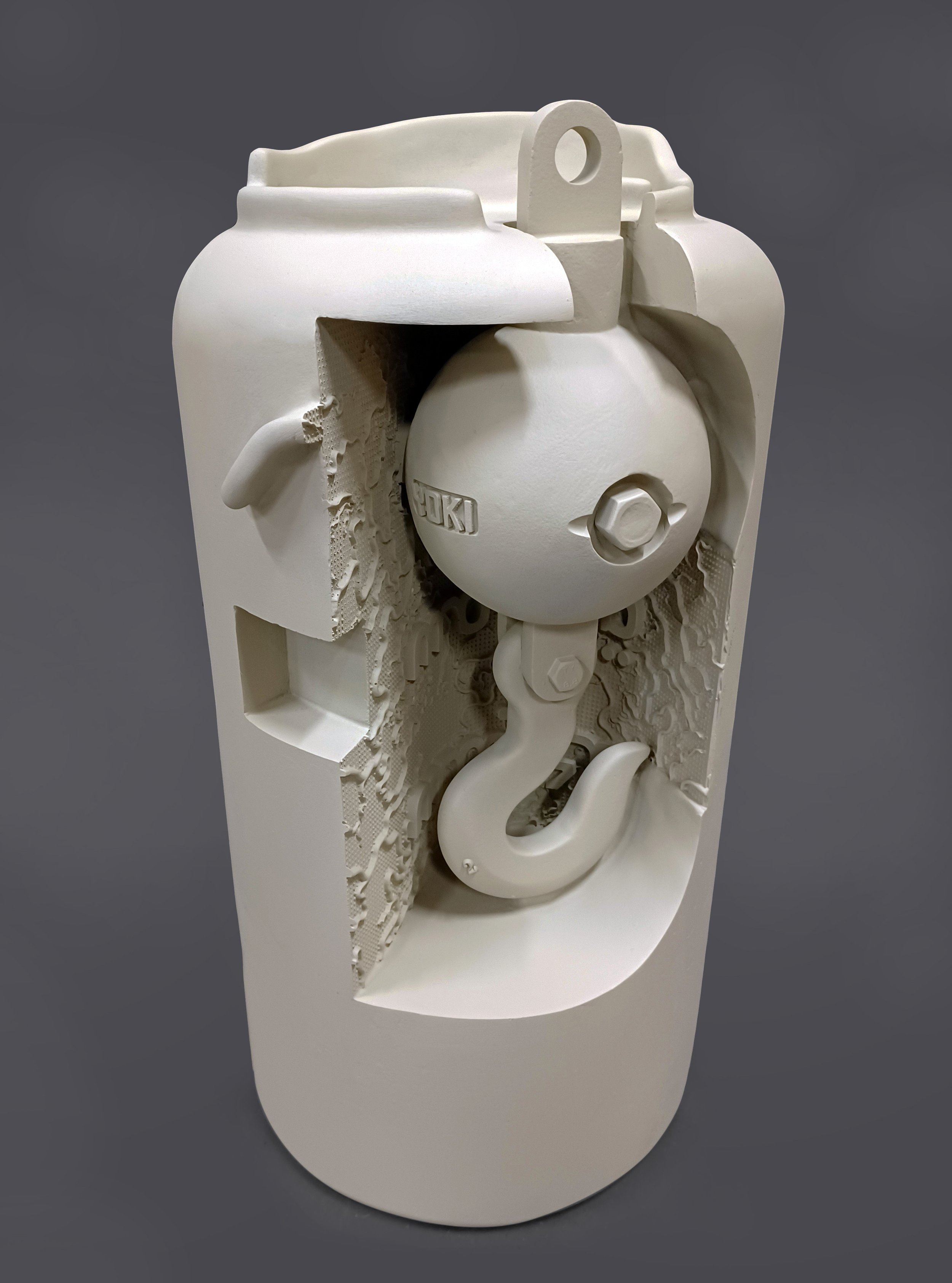Alex Bunn

“Objects are never complete, definite, or immutable. They are just a confluence of events.”
Interview by Brooke Hailey Hoffert
Could you tell us a bit about yourself and your background? Where did you study?
People like me often call themselves self-taught but I’m a rubbish teacher and a naughty student.
You state, “I guide events to generate vestiges of change”. Can you expand more on that change?
After I wrote that I read a physicist describe the fundamental constituents of nature not as objects, as we normally infer, but more like events. You would assume that objects precede the events in which they are agents, so it seems like a radical idea to place events as more fundamental, but I think it is also applicable to the large, commonplace objects that we interact with. Objects are never complete, definite, or immutable. They are just a confluence of events. Their identity is also volatile. I wanted to make these countless events more ostensible in the things that I made.
To expound that way of thinking I set about not making something directly but instead setting up a confluence of events that resulted in singular objects embodying those events or changes. Loosely, I tried to incorporate a forking set of events into an object.
What was particularly interesting was that these weren’t necessarily a linear sequence of events. They acted as a way of cheating time, in a way. It led me to try to compress dimensions and therefore find ways to make an object scintillate with richer information without becoming a bubbling mess.
What themes are you currently exploring in your practice?
I’m spiking pits for myself throughout the forest via sculpture, photography, and a recent film. A recurrent theme in my present work is the compression of information, (which isn’t as dry as it sounds, honestly). I’ve approached it in various ways. I mentioned previously that I’ve been compressing time and identities in different ways. I have also made artworks compressing the entire life of an object into an instant. This concept is similar to a mathematical construct called ‘phase space’ which is a description of every state of a system. That idea was particularly interesting because it creates a different type of objecthood: An object of the entire life of something. Its position in space and time, momentum, perhaps orientation, whatever, are all encoded as dimensions. Relating that to sculpture has been quite an eye bath.
I am also taking tentative steps into trying to incorporate something akin to forces into my work. I suppose very material-based sculpture like ceramics, for example, often indirectly celebrate physical forces, playing with tension, fluidity, state-transitions, and gravity, for example. I’m looking at deploying other forces by setting up certain parameters or rules while making work. Aren’t forces simply a set of physical rules anyway? It’s yet another way in which information can be added to an image or object without physically adding anything at all. You’ve installed a quality, rule, or force instead. Working this way contributes to displaying the rich latency of objects as opposed to a richness imbued by its history.
Cursed Array at Kunsthal Charlottenborg, 2021
BIPBIP2, 2022
Bodylink, 2018
Tell us a bit about how you spend your day/studio routine? What is your studio like?
I just completely destroyed my studio. Clattering around knee-deep in toxic umschca for a couple of weeks of long days to finish a project. It looks more like destruction than production. An ever-swelling poo-eyed demon of chaos. Friday I plan to meticulously rearrange everything into squeaky order. More like the spartan, laboratory setting I hope for. My studio mate has been offering me herbal medicine. I realized that he could probably hear me screaming “I want to die!” into my respirator.
What artwork have you seen recently that has resonated with you?
I always have my ears pricked for things that throw spanners in the works of how we generate experience, be that through the poetry/linguistics/wtf of Nora Turato, sound by Dylan Nyoukis or AI generative stuff by just about anyone. I noticed Cleo Sjolander enjoying good results this way.
There seems to be a thread of people mining the deep past: Folklore, medievalism, and perhaps related horror in recent years that also appeals to me. Frederik Exner, Juergen Baumann, and Christiane Blattmann are good exponents of that.
Lumbrimov Angus Hughes, 2019
Cup Duct Baulk and Backfill, 2016
Yoki II, 2022
Yoki III, 2022
How do you go about naming your work?
I have used different approaches better suited for each artwork but recently I’m most keen on pithy labels. I feel like the artworks best benefit from having their own quick reference like anyone called Keith or Giles does. The more name-like the better. Something like The Lincolnshire Poacher I used recently is perfect. It already has many applications or meanings. It’s repeatedly co-opted as a title to name something. It’s like a title looking for something to label. I guess it’s more interesting to let the artwork load the title with meaning rather than the other way around. I mean, nobody thinks of Keith as “the forest” as Keith means etymologically. They think about what Keith is like. (which is obviously Keith-dependent)
All images are courtesy of the artist
Date of publication: 03/11/22






